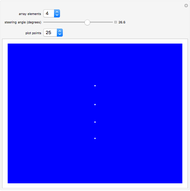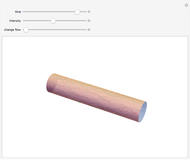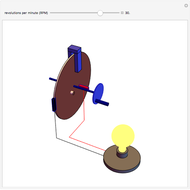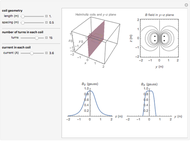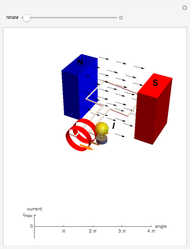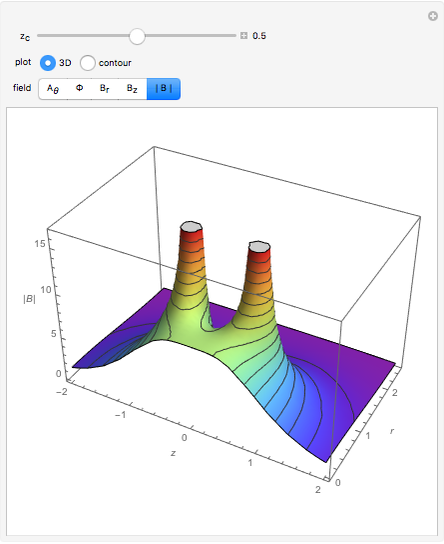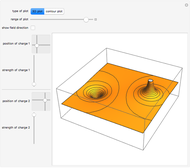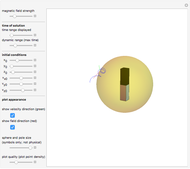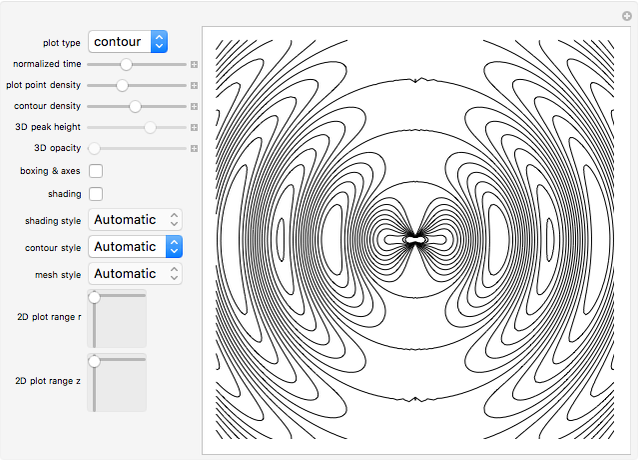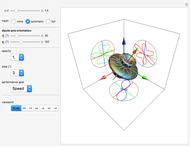Radiation Pattern of a Dipole Antenna with Arbitrary Orientation

Requires a Wolfram Notebook System
Interact on desktop, mobile and cloud with the free Wolfram Player or other Wolfram Language products.
The normalized E-radiation pattern of a center-fed linear dipole antenna with sinusoidal current distribution and variable axis direction  is plotted. Three of the cube sides correspond to the intersections of radiation pattern with the coordinate planes. The
is plotted. Three of the cube sides correspond to the intersections of radiation pattern with the coordinate planes. The  directions are shown as red, green, and blue, respectively. The length/wavelength of the dipole ranges from 0.1 to 10 in steps of 0.1. The default three-dimensional evaluation is done at every 3°. Two-dimensional evaluation is always carried out at 1°. A smooth picture might take some time to display.
directions are shown as red, green, and blue, respectively. The length/wavelength of the dipole ranges from 0.1 to 10 in steps of 0.1. The default three-dimensional evaluation is done at every 3°. Two-dimensional evaluation is always carried out at 1°. A smooth picture might take some time to display.
Contributed by: Nikolitsa Yannopoulouand Petros Zimourtopoulos (January 2016)
(Antennas Research Group, Xanthi, Thrace, Hellas and Scheiblingkirchen, Austria, EU)
Open content licensed under CC BY-NC-SA
Snapshots
Details
The " /λ" control changes the length per wavelength of the dipole.
/λ" control changes the length per wavelength of the dipole.
The "mesh" and "opacity" controls correspond to the well-known options of Mathematica, while the "performance goal" control stands for Mathematica's PerformanceGoal. The default setting is "Speed", but "Quality" results in a picture with finer detail.
The "step [°]" control changes the number of plot points for the 3D radiation pattern. The initial value of 3° results in a smooth picture.
The " [°]" and "
[°]" and " [°]" controls change the orientation of the dipole axis (the orange vector), and they are independently variable in steps of 5°.
[°]" controls change the orientation of the dipole axis (the orange vector), and they are independently variable in steps of 5°.
The "viewpoint" control gives six predefined viewpoints and a reset button to the initial view. To reset the pan/zoom settings, select the object and right click to get to the popup menu and the "Reset Pan/Zoom" option.
For faster evaluation, SphericalPlot3D was chosen instead of RevolutionPlot3D or ParametricPlot3D.
Reference
[1] N. I. Yannopoulou and P.E. Zimourtopoulos. "Virtual Antennas, Volume 1, 1999." (Feb 3, 2002). library.wolfram.com/infocenter/MathSource/868.
Permanent Citation







